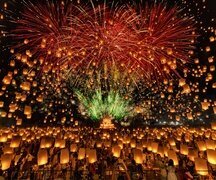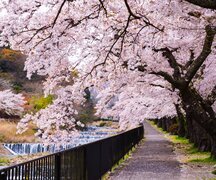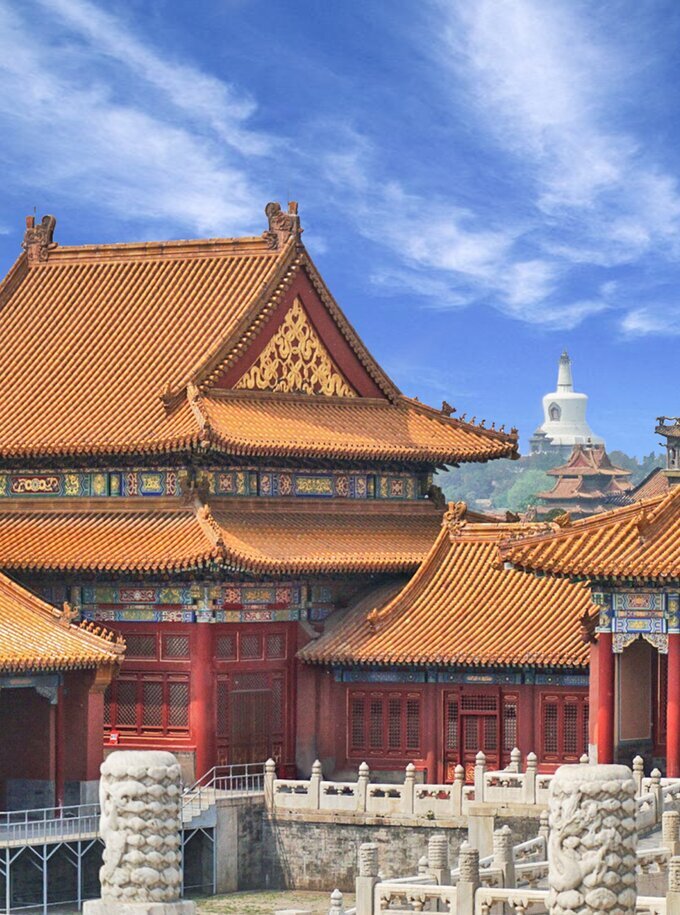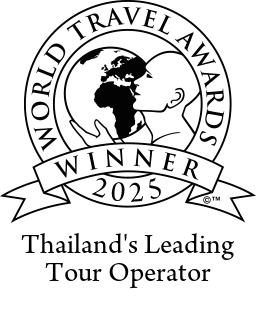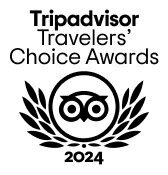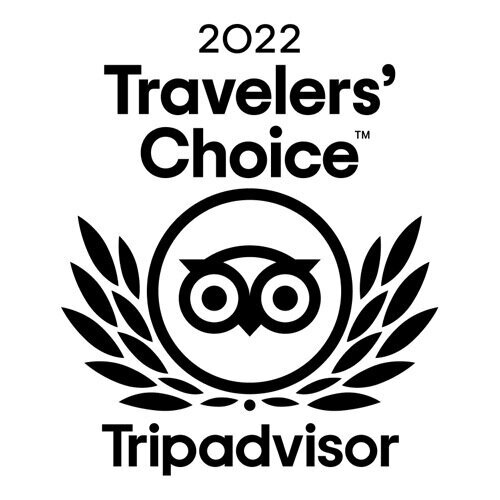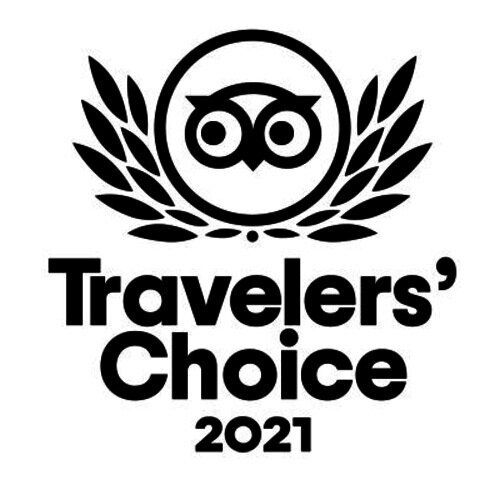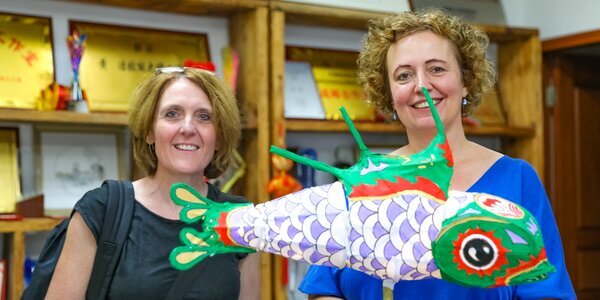If you're planning your first trip to Thailand and want something more personal than a typical tour, you're in the right place.
We've spent nearly a decade helping travelers explore Thailand the right way. We know where not to waste time, and where it's worth slowing down to really connect with the culture, the scenery, and each other.
This itinerary isn't about cramming in the most destinations. It's about traveling well, with enough comfort, flexibility, and local insight to make every day feel just right. Whether you're traveling as a couple or with kids, you'll find options along the way to match your pace and interests.
Let us help you make the most of your time in Thailand—with a trip that feels effortless, meaningful, and entirely your own.
Is 2 Weeks in Thailand Enough?
It's a question many travelers ask: "Is two weeks too short? Too long? Or just right to truly experience Thailand?"
The answer: For first-time visitors, 14 days in Thailand is just right.

The classic way to spend 2 weeks is: One week exploring the cultural north (Bangkok and Chiang Mai), and one week relaxing in the tropical south.
You can spend the whole southern week island-hopping and enjoying the beaches, or—if you prefer something more active—add a couple of days in Khao Sok National Park for jungle, lake, and soft adventure before heading to the coast.
(Personally, I highly recommend Khao Sok. It's peaceful, beautiful, and a great way to add something truly memorable to your trip.)
It gives you time to soak in the country's contrasts—from temples and street food in the north to rainforests and beaches in the south—without feeling rushed or overwhelmed.
Tell us what you're looking for, and we'll customize a 14-day itinerary to match your pace, style, and interests.
2-Week Thailand Itinerary at a Glance
Let's take a quick look at what a 14-day Thailand trip could look like.
We start with a few days in vibrant Bangkok, then head north to Chiang Mai for culture and nature. After that, we fly south—where you will have a soft adventure in the jungle of Khao Sok before unwinding on the island.
In the south, we've chosen Koh Samui for its balance of beautiful beaches, tranquil vibe, and good resorts for couples and families—but this part of the trip can be customized. You could swap Koh Samui for Phuket, Krabi, or even go off the beaten path to places like Khao Lak, depending on what you're looking for.

| Days | Highlights | Overnight |
|---|---|---|
| Day 1 | Bangkok Arrival | Bangkok |
| Day 2 | Explore Bangkok's cultural landmarks | Bangkok |
| Day 3 | Visit local markets beyond the usual way | Bangkok |
| Day 4 | Bangkok to Chiang Mai | Chiang Mai |
| Day 5 | A day in Doi Inthanon: waterfalls, trails, villages | Chiang Mai |
| Day 6 | Temples Tour & Private Cooking Class | Chiang Mai |
| Day 7 | Fly to Phuket | Phuket |
| Day 8 | Phuket to Khao Sok: Elephant Experience & Canoeing | Kao Sok |
| Day 9 | Cheow Lan Lake & Jungle Walk | Kao Sok |
| Day 10 | Kao Sok to Koh Samui | Koh Samui |
| Day 11-13 | Beach days, island-hopping, or just relaxing | Koh Samui |
| Day 14 | Departure |
Why This Itinerary?
This route is designed for travelers who don't want to rush from place to place—or spend time in overcrowded, overly touristy spots. So you won't find Khao San Road here. Or elephant parks that feel like a zoo.
Instead, it offers:
- A meaningful elephant experience in Khao Sok, away from the crowds;
- A cooking class hosted by a local family, not in a big tourist kitchen;
- Stays in quiet, beautiful places—like a jungle tent or a beachfront resort.
The pace is slow and comfortable, giving you time to enjoy each stop and discover a more authentic side of Thailand.
If that sounds like your kind of trip, keep reading. The next section breaks down the full 14-day plan, with insider tips and flexible options to help you make it your own.
2-Week Thailand Itinerary: Day-by-Day Breakdown
Day 1: Arrival in Bangkok — Settle In & Relax
 The Grand Palace
The Grand PalaceWelcome to Thailand! You'll most likely land at Suvarnabhumi Airport (BKK), Bangkok's main international hub.
From Suvarnabhumi Airport (BKK), you can reach the city center by the Airport Rail Link, taxi, or, for maximum convenience, book a private transfer with us.
Tip from my experience: If you can, try to avoid flights that land during rush hours (around 7–9 AM or 4–7 PM). Bangkok traffic can be crazy. From my own experience, it once took me over 2 hours to get from the airport to my hotel (just 30 km)!
Where to Stay in Bangkok?
If you're looking for iconic views and a peaceful atmosphere and have a higher budget, the Bangkok Riverside is perfect. The Avani Plus Riverside Bangkok Hotel is a popular choice among our clients.
Sukhumvit is great if you want to experience vibrant nightlife and international dining. The Sheraton Grande Sukhumvit is ideal for couples, while Maitria Hotel Sukhumvit 18 is recommended for families.
Silom, including Sathorn, is ideal for anyone interested in Bangkok's famous rooftop bars. Eastin Grand Hotel Sathorn Bangkok is recommended for your stay.
We have a detailed guide on where to stay in Bangkok.
After checking in, take it easy for the rest of the day. You can:
- Take a short walk along the Chao Phraya River
- Or if you're up for something special, join a dinner cruise—a great way to enjoy the river at night, with temples lit up along the way
Day 2: Bangkok's Historic Heart — Temples, Palaces & a Taste of Thai Culture
Today is all about exploring Bangkok's most iconic landmarks and getting a real feel for the city's cultural heart.
 The Grand Palace
The Grand PalaceAmong so many temples in Bangkok, we recommend focusing on these three:
- The Grand Palace — Bangkok's most famous landmark and home to the sacred Emerald Buddha.
- Wat Pho — famous for its 46-meter-long Reclining Buddha and as the birthplace of traditional Thai massage.
- Wat Arun — known as the Temple of Dawn, located on the opposite side of the river with stunning riverfront views.
Instead of following the typical one-size-fits-all tour route, we usually make the day more authentic and diverse by linking the sites with a mix of local transport—a public taxi boat, a Thai tuk-tuk, and a long-tail boat through the quiet canals (klongs) of Thonburi, the lesser-seen, old part of Bangkok. You'll cruise past stilt houses, local temples, and maybe even spot a water monitor sunbathing along the banks.
 Take a tuktuk and long-tail boat ride in Bangkok
Take a tuktuk and long-tail boat ride in BangkokTip: These landmarks are beautiful, but they do get crowded. Try to start early (around 8:30 AM) to beat the biggest tour groups.
Optional Ideas for the Afternoon
- With kids? The Museum of Siam offers a fun and interactive way to learn about Thai history and culture—great for families.
- Still have energy? Head to Chinatown for an evening street food tour—a real highlight for food lovers.
- Prefer something relaxed? Wind down with a sunset drink at a rooftop bar like Sala Rattanakosin or Eagle Nest, both with great views over Wat Arun and the river.
Tip: It's a full sightseeing day, so take it at your own pace and stay hydrated. Our private guide and air-conditioned vehicle will make the day much more comfortable, especially in Bangkok's heat.
 Chinatown, Bangkok
Chinatown, BangkokDay 3: Local Markets around Bangkok
Bangkok's markets are a vibrant reflection of its culture, offering an authentic glimpse into everyday Thai life. While some are overrun with tourists, we've handpicked three markets that each offer something unique and special.
Start your morning at Mahachai Market, Thailand's biggest fish market. It's a bit off the beaten path, but well worth a visit for its raw, energetic vibe. You'll see locals bargaining for seafood, vendors unloading fresh catch by the pier, and the bustle of a working port city—very few tourists make it here.
 Maeklong Railway Market
Maeklong Railway MarketNext, head to the Maeklong Railway Market, famous for the train that passes straight through the market. Most visitors just snap a few photos from the sidelines, but we offer a more immersive experience: ride the train into the market itself. It's the best way to feel the atmosphere from the inside out. We'll take care of the train tickets and transfers for a smooth experience.
 Damnoen Saduak Floating Market
Damnoen Saduak Floating MarketFinally, visit the Damnoen Saduak Floating Market, one of Thailand's most iconic. Yes, it's touristy, but it's still vibrant and full of charm, with colorful boats, floating vendors, and plenty of great photo ops and street food. If you're looking for something more local and low-key, we recommend the Amphawa Floating Market, but note that it only opens on Fridays, Saturdays, and Sundays.
Insider Tips:
- These markets are located 50–100 km from central Bangkok, so a private tour with a driver and guide is the most convenient and comfortable way to go.
- This market day is more fun with an early start (pick-up around 7:00 AM). With our private driver and guide, you can skip the stress of figuring out the timing and routes.
If you're back in the city by afternoon, consider:
- A relaxing Thai massage,
- Or a quiet visit to the Jim Thompson House, with its tranquil garden and beautiful traditional architecture—perfect for unwinding after a busy morning.
Day 4: Bangkok to Chiang Mai — Welcome to Northern Thailand
Today, say goodbye to Bangkok and fly north to Chiang Mai, the cultural heart of Northern Thailand. The flight takes just about 1.5 hours, and we usually recommend flying in the morning so you can make the most of your afternoon.
 The Phae Gate
The Phae GateOnce you arrive, take it slow. Walk or hop in a tuk-tuk to explore the Old City—perhaps stop by Wat Phra Singh, one of Chiang Mai's most revered temples. If it's the weekend, don't miss the Saturday or Sunday Walking Street Market, where you can snack on local street food, shop for handmade crafts, and enjoy live street music.
What to Expect in Chiang Mai
Chiang Mai has a very different rhythm from Bangkok—cooler, greener, and more relaxed. Think leafy backstreets, artisan cafés, historic temples, and a strong connection to nature and tradition. It's a great place to slow down and soak in the local atmosphere.
Where to Stay in Chiang Mai
We recommend staying in or near the Old City for easy access to the temples, cafés, and markets. Here are a few ideas:
- For a quiet, charming stay inside the Old City, Smile Lanna Hotel is a great pick—comfortable, peaceful, and close to everything.
- If you prefer something more luxurious and tranquil, the Riverside area offers scenic views and a relaxed ambiance. Maladee Rendezvous Hotel is one of our top recommendations there. Just note that while it's lovely and calm, it has fewer shopping and nightlife options compared to central Chiang Mai.
Get detailed information on our guide Where to Stay in Chiang Mai.
Day 5: A Day in Doi Inthanon — Waterfalls, Trails & Hill Tribe Villages
Chiang Mai has many sides. For today, you can choose a culture day, an elephant day, or a nature day. We usually recommend starting with nature—a trip to Doi Inthanon—so you get the most active part done early in the trip, before slowing down later.
 Doi Inthanon National Park
Doi Inthanon National ParkDoi Inthanon is Thailand's highest peak. It's highly recommended if you want to escape the city heat. Just a 2-hour drive from Chiang Mai, the park offers cool mountain air, scenic waterfalls, and forest trails.
One of my favorite parts is the short walk near the summit —a one-hour loop through a mossy cloud forest. It's easy, peaceful, and kid-friendly.
If you're up for more of a challenge, there's also a longer trail (about 3–4 hours) that takes you deeper into the forest. Just note that this trail is sometimes closed during the rainy season.
You'll also visit a stunning multi-tiered waterfall that's perfect for a scenic stop (and yes, it's photo-worthy).
On the way back down, we'll stop by a Karen hill tribe village that most group tours skip (they don't even know it exists, to be honest). It's not a show village—it's real. You'll meet families who grow coffee and weave textiles by hand. You'll get a glimpse of what daily life is like in the mountains, maybe even sip some freshly brewed local coffee.
 A Karen hill tribe village near Doi Inthanon National Park
A Karen hill tribe village near Doi Inthanon National Park Tips:
1. Don't forget to bring a light jacket. Even if it's over 35°C in Chiang Mai, the summit can drop to 10–15°C. I went in late August and was honestly freezing up there.
2. Evening tip: Treat yourself to a Thai massage — seriously. They're affordable and everywhere in Chiang Mai. When I was there, I honestly wanted to go every night. It's the perfect way to end the day.
Day 6: Chiang Mai's Spirit — Temples & Flavors
Today is a more relaxing day — time to explore the quieter, more local side of Chiang Mai. (And if you're wondering, "Wait, no elephant day?" Don't worry — we've saved that for Khao Sok, where the experience is more peaceful and less touristy.)
We'll start the day with a private cooking class in a local home. You'll explore the host's herb garden, pick ingredients, and learn to cook 3–4 classic Thai dishes. It's not just about recipes, but stories, flavors, and laughter in the kitchen.
 Cooking class at a Thai local family
Cooking class at a Thai local familyTraveling with kids? Let us know — we can arrange a farm-style class where little ones can pick papayas, herbs, or even check out the rice paddies. It's fun and hands-on for the whole family.
 Cooking class at our hand-picked farm
Cooking class at our hand-picked farmIn the afternoon, head back into the Old City for a relaxed temple walk. Start with Wat Chedi Luang, known for its towering brick stupa and peaceful courtyard.
Then make your way up the mountain to Wat Phra That Doi Suthep, Chiang Mai's most iconic temple. I always recommend visiting around late afternoon — the golden light is perfect, and you can often catch the sunset from the viewpoint. If you're lucky, you might also join a short monk blessing — it's a quiet, moving moment that stays with you.
 The sunset at Wat Phra That Doi Suthep
The sunset at Wat Phra That Doi SuthepOh — and one more thing:
If you're visiting in November, you're in for something truly special. This is when Yi Peng, Chiang Mai's famous lantern festival, takes place. Many people plan their whole trip around it. Imagine standing under a sky filled with thousands of glowing lanterns, all rising slowly into the night.
 Yi Peng Sky Lantern Festival
Yi Peng Sky Lantern FestivalDay 7: Fly to Phuket
Today, it's time to swap the misty mountains for the beach. You'll take a short flight (about 2 hours) from Chiang Mai to Phuket.
Since the drive from Phuket Airport to Khao Sok National Park takes around 3 hours, we recommend breaking up the journey with a relaxing overnight stay in Phuket. It's a great chance to slow down a bit and enjoy the sea breeze before heading into the jungle.
 Phuket
PhuketWhere to Stay in Phuket?
We usually suggest staying in the Kata or Karon Beach areas. These beaches are clean, calmer, and more laid-back compared to busy Patong — great for a restful night and a peaceful sunset.
Prefer something more upscale and quiet? Surin Beach might be a better fit.
Just let us know what kind of vibe you're after — family-friendly, romantic, or something with nightlife — and we'll help match you with the right beach and hotel.
Day 8: Phuket to Khao Sok National Park
After a restful night in Phuket, it's time to head into one of Thailand's most beautiful natural areas — Khao Sok National Park.
 Khao Sok Cheow Larn Lake
Khao Sok Cheow Larn LakeFrom what we've seen and heard from many travelers — this is the best place in Thailand to really connect with nature. It's not just about the lush rainforest (which, by the way, is even older than the Amazon). What sets Khao Sok apart are its wilder, more dramatic landscapes and the wide variety of activities — hiking, canoeing, cave exploration, and its unique places to stay, from floating bungalows to cozy treehouses and jungle lodges.
Tip: If you're short on time, Khao Yai is another option. It's closer to Bangkok and easier to reach — but for a deeper, wilder experience, Khao Sok wins.
The only downside? Getting here isn't exactly easy.
There's no airport nearby, and public transport is slow and not tourist-friendly. It takes about 3 hours by car from Phuket, so we recommend booking a private transfer for comfort and ease.
If you arrive early enough today, you can fit in two incredible experiences:
Canoe Ride on the Sok River
You can enjoy a peaceful canoe trip down the Sok River. No paddling needed — a local guide does the work, so you can sit back and take in the jungle cliffs, hanging vines, and maybe spot monkeys, hornbills, or even a sleeping snake overhead.

Elephant Experience
There are a few elephant camps in the Khao Sok area, but we highly recommend Elephant Hills. It is Thailand's first luxury tented camp with a strong focus on ethical wildlife experiences. Here, you can meet rescued elephants up close, help prepare their food, and give them a bath in the river.
 Elephant Hill
Elephant HillFor this day, we usually arrange a stay at the luxury tented camp — an all-inclusive experience that's consistently a guest favorite.
Not keen on staying at Elephant Hills? No problem — you have other great options too:
Where to Stay in Khao Sok
You have two main options here — both unique in their own way:
Jungle Lodges near the park entrance (Khao Sok Village)
A great base for your first night. You can enjoy comfort while staying close to nature. Think riverside cottages or treehouse-style rooms with jungle sounds at night.
Floating Bungalows on Cheow Lan Lake (for Day 9)
 Floating Bungalows on Cheow Lan Lake
Floating Bungalows on Cheow Lan LakeMore rustic but truly unforgettable. You'll sleep right on the lake, surrounded by misty cliffs and absolute stillness.
Since it takes time to reach the lake, we usually recommend staying near the park entrance on Day 8, then transferring to the lake for a full-day tour and overnight stay on Day 9.
Let us know your preference — we can tailor it based on how adventurous you're feeling!
Day 9: Cheow Lan Lake & Jungle Walk
Today is all about experiencing the heart of Khao Sok — the breathtaking Cheow Lan Lake.
In the morning, you'll be driven about 1.5 hours from your lodge to the Cheow Lan Lake pier — usually by private car or a transfer arranged by your camp. From there, hop on a longtail boat (about 45 minutes) that winds through towering cliffs and emerald waters to your floating bungalow.
 Khao Sok Floating House
Khao Sok Floating HouseThere are several floating camps around the lake, but we usually recommend the Rainforest Floating Camp by Elephant Hills known as one of the only luxury floating tented camps in the world. It's tucked away in a quieter corner of the lake, offering better views, more comfort, and a strong connection to nature.
Once you arrive, your time is yours: go for a swim, take a kayak out, or simply float and stare at the cliffs. It's that peaceful.
Later, a local guide will take you on a short jungle walk or a boat-to-cave adventure (if you're traveling from May to October, some caves may be closed due to flooding). The trails are wild but manageable, and the guide will point out wildlife, plants, and sounds you'd never notice on your own.
 Jungle trek in Khao Sok
Jungle trek in Khao Sok Cave adventure in Khao Sok
Cave adventure in Khao Sok Spending the night on the lake is more than just checking into a room — it's a chance to slow down and fully connect with your surroundings. No Wi-Fi, no distractions — just you, the lake, the jungle sounds, and maybe a chance to reconnect with someone you love, or even with yourself.
Tip: We recommend packing a small overnight bag for the lake stay — most travelers leave their main luggage at their accommodation near the park entrance and travel light for this part of the trip.
Day 10: Khao Sok to an Island
After a slow morning on the lake — maybe one last swim or just soaking in the jungle stillness — it's time to leave Khao Sok and head for the islands.
 Phi Phi Island
Phi Phi IslandYou've got a few great options, depending on what kind of beach experience you're after:
Phuket: The easiest and fastest option. It's only about a 3-hour drive from Khao Sok. If you're craving beach time mixed with nightlife, restaurants, and day trips (like Phi Phi Islands), Phuket delivers.
Khao Lak: A quieter alternative, closer than Koh Samui and less crowded than Phuket. It's a favorite for couples and families wanting peaceful beaches and fewer tourist crowds. It's about 2.5–3 hours by car from Khao Sok.
Koh Samui: If you're looking for a more tropical island vibe with palm-lined beaches, beach clubs, and a mix of quiet and lively areas — Samui is a great choice. But getting there takes longer: around 1.5 hours by car to the ferry pier, 1.5–2 hours by ferry, or you can fly from Surat Thani or Phuket if you prefer a quicker route.
Tip:
1. We can help arrange whichever transfer you choose — from private cars and ferry tickets to flights — so everything runs smoothly.
2. When picking your island, consider the rainy season: Phuket and Khao Lak tend to be wetter from May to October, while Koh Samui usually sees better weather during that time.
Days 11–13: Beach Days
Now it's time to slow things down. Whether you're on Koh Samui, Phuket, or Khao Lak, these next few days are all about enjoying Thailand's island charm — white sand beaches, turquoise waters, and laid-back vibes.
Each island offers its own island-hopping options:
- From Koh Samui, take a boat to Koh Tao and nearby Koh Nang Yuan — a postcard-perfect trio known for clear waters, shallow snorkeling, and that iconic sandbar.
- From Phuket, explore the Phi Phi Islands or paddle through hidden lagoons in Phang Nga Bay.
- From Khao Lak, the Similan Islands (open Nov–May) offer some of Thailand's best snorkeling and diving.
Day 14: Departure Day
After a relaxing few days by the beach, it's time to say goodbye to Thailand.
How Much Does 2 Weeks in Thailand Cost?
Thailand is surprisingly affordable compared to many Western countries — especially when you travel privately with comfort and convenience in mind.
With our service, a 2-week trip for two people typically costs between $2,500 to $3,500 USD, covering internal flights, accommodation, sightseeing, private transfers, and a guide. The exact cost depends on your choice of hotels and any special activities.
Here's a quick breakdown:
Hotels: A 4-star hotel in Bangkok costs around $80–100 per night; Chiang Mai offers similar options for $70–90. On islands like Phuket or Koh Samui, beachfront resorts usually range from $80 to $150 per night.
Domestic flights are budget-friendly at $40 to $60.
Activities: Entry fees are low, from $1 to $15 for most attractions. Special experiences like a half-day elephant care program cost around $70, and snorkeling tours about $50-80.
Food: Dining is delicious and affordable. Street food meals can be as low as $1–3, regular restaurants range from $5–15, and nicer dinners may cost around $30.
With our experienced travel advisors, you can make the most of your budget and enjoy a stress-free, unforgettable private tour.
How to Get around Thailand
For a 2-week itinerary like this, the smartest way is a mix of private transfers and short domestic flights. It saves time, avoids hassle, and gives you flexibility.
Flights Between Regions
Thailand is long and spread out — flying between cities (e.g. Bangkok to Chiang Mai, or Chiang Mai to the south) saves hours, and costs very little — usually $40–60 per flight.
We include these in our tours and handle the bookings for you.
Private Transfers
For scenic or off-the-beaten-path routes (like from Chiang Rai to Chiang Mai, or Khao Sok to the pier), a private car is the best way to go. No waiting, no detours — and you can stop along the way if you see something interesting.
Boats for Islands
To reach islands like Koh Samui or Phi Phi, you'll take a ferry or speedboat, depending on the location. We arrange the transfers so it's seamless — you won't be dragging luggage onto a public pier.
Tip: Avoid relying too much on trains or buses — they sound romantic, but in practice they're time-consuming and often not worth the savings on a 2-week trip. Unless you specifically want the sleeper train experience, fly and drive.
Best Time to Visit Thailand
For most travelers, the best time to visit Thailand is November to March — the cool, dry season. You can expect pleasant temperatures (24–31°C / 75–88°F), low humidity, and clear skies, perfect for sightseeing, outdoor adventures, and lazy beach days.
If you're visiting Thailand only once, I highly recommend coming in November for the Yi Peng & Loy Krathong Festivals. With pleasant weather, the world's largest lantern release, and a deeply immersive cultural experience, it's an unforgettable time to explore Thailand at its most magical.
Personally, I also enjoy visiting in June or late October.
In June, temperatures start to cool slightly, and you can enjoy fewer crowds and more competitive prices without the heavy rains that come later in the season. Late October is another sweet spot: the rainy season is tapering off, it's cooler, and peak-season crowds haven't arrived yet.
One thing to note: Thailand's islands have different weather patterns.
- Phuket and the west coast: best from November to April
- Koh Samui and the east coast: try to avoid the wettest months, October to November
See more about the best and worst times to visit Thailand.
You're in Good Hands with Highlights Travel
At Highlights Travel, we have lots of experience with creating the perfect trip for any traveler. We understand what makes traveling special and are dedicated to providing a unique and special experience.
Read comments from our clients on TrustPilot, for example:
"Everything went better that we'd expected! Our guides were local people who knew about the city, the people, and how to solve problems. They were really punctual and had the best attitudes! -- Daniel Ponce
"Traveling with Highlights Travel is a guaranteed wonderful experience in Asia! I highly recommend them!"--Rosangela Campos
Get a wonderful Thailand vacation by sending us a message. Or check out our sample itineraries for inspiration:
Get Inspired with Some Popular Itineraries
At Highlights Travel, we create your kind of journey — your dates, your destinations, at your pace. You can have any trip tailor made for your travel.



